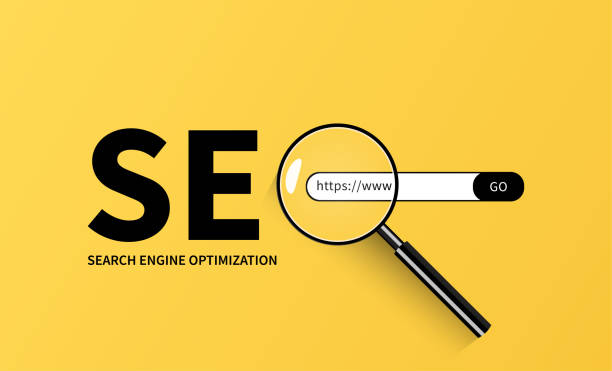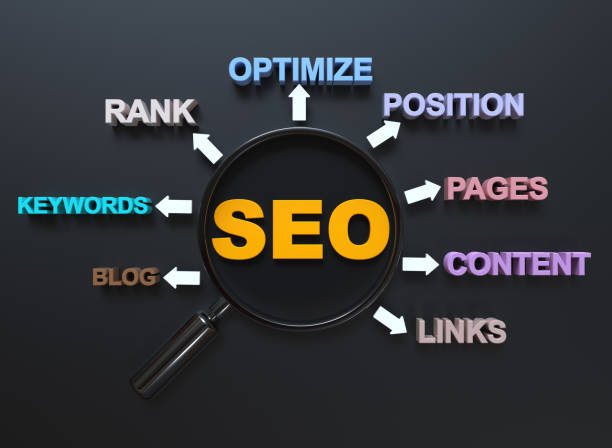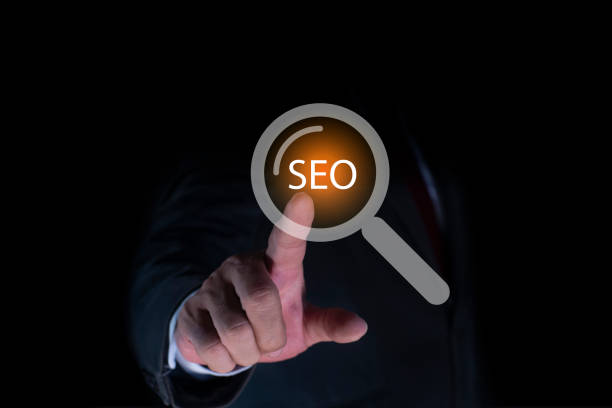What is Internal SEO and Why is it Important?
Internal SEO, also known as On-Page SEO, is a set of techniques and actions you perform within your website to improve your site’s ranking in search engine results like Google.
This includes optimizing content, title tags, meta descriptions, URL structure, and other key page elements.
The importance of internal SEO is that it helps search engines better understand the subject and concept of your pages.
With a better understanding, search engines can display your site to users looking for relevant information.
Internal SEO plays a vital role in increasing organic website traffic and, consequently, increasing brand awareness and sales.
With proper optimization, you can outperform your competitors and gain a better position in search results.
A strong internal #SEO strategy is the foundation for success in the online world.
If your site is not technically optimized and does not have high-quality content, your other efforts in the field of Off-Page SEO and content marketing alone will not be enough.
Internal SEO allows users to have a better experience on your site, spend more time on the site, and increase the likelihood of their return.
To better understand SEO, you can refer to Wikipedia.
Is your company’s website as professional and reliable as it should be? With professional corporate website design by Rasaweb, create an online presence that represents your credibility and attracts more customers.
✅ Build a powerful and professional image of your brand
✅ Convert visitors into real customers
⚡ Get a free consultation right now!
Keyword Research – A Fundamental Step in Internal SEO
Keyword research is one of the most important steps in internal SEO.
This process involves identifying the words and phrases that users use to search for information related to your business in search engines.
The goal is to find words that have both high search volume and relatively low competition.
There are various tools for keyword research, including Google Keyword Planner, Ahrefs, and SEMrush.
After identifying the appropriate keywords, you should strategically use them in your site’s content, title tags, meta descriptions, and other page elements.
Choosing the wrong keywords can invalidate your SEO efforts.
For example, using highly competitive keywords may prevent your site from ever ranking well in search results.
On the other hand, using keywords with low search volume may not attract enough traffic to your site.
Therefore, accurate and targeted keyword research is the key to success in internal SEO.
For more information on how to choose the right keywords, you can use reputable online resources.
Optimizing Page Title (Title Tag) and Meta Description
The Title Tag and Meta Description are two important HTML elements that appear in search engine results.
The title tag is the clickable title that appears at the top of the search result, and the meta description is a short summary of the page’s content that appears below the title.
Optimizing these two elements is very important for internal SEO, as it helps search engines understand the subject of the page and encourages users to click on your link.
The title tag should be accurate, concise, and contain the page’s main keyword.
The length of the title should not exceed 60 characters, otherwise, it may be displayed incomplete in search results.
The meta description should also be attractive and contain relevant keywords.
The length of the meta description should not exceed 160 characters.
Using a strong CTA (Call to Action) in the meta description can increase the click-through rate (CTR).
Here is a table that shows an example of best practices for optimizing the page title and meta description:
| Element | Best Practice |
|---|---|
| Page Title (Title Tag) | Accurate, concise, contains keywords, maximum 60 characters |
| Meta Description | Attractive, contains relevant keywords, maximum 160 characters, has CTA |
Click here to preview your posts with PRO themes ››
Remember that internal SEO is not just about putting keywords in the title and description, but also about considering the user experience.
The title and description should be such that they encourage users to click on your link and find the information they need on your site.
For more information on optimizing the page title and meta description, you can refer to Moz’s educational resources.
Content Optimization – The Main Key to Attracting Audience and Search Engines
Content is king! This phrase is very common in the world of SEO, and for good reason.
High-quality, engaging, and relevant content not only attracts users to your site, but also helps search engines better understand the subject and value of your pages.
Content optimization for internal SEO includes creating unique content, using keywords naturally, properly structuring content, and creating relevant internal and external links.
Your content should meet the needs of your target audience and answer their questions.
Using headings, subheadings, bullets, and images can help with content readability.
Internal links help search engines better understand the structure of your site, and external links to reputable and relevant sites can increase the credibility of your content.
Internal SEO should always be accompanied by the production of valuable content to achieve the desired result.
To get ideas about content production, you can use Content Marketing Institute.
Are you losing potential customers due to an unprofessional website? Rasaweb is your answer! With our specialized corporate website design services:
✅ Enhance the credibility and position of your business
✅ Experience attracting more targeted customers
⚡ Take action now to get a free consultation!
Optimizing URL Structure – Creating SEO-Friendly URLs
URL structure is another important factor in internal SEO.
SEO-friendly URLs are URLs that are short, descriptive, and contain the page’s main keyword.
Complex and long URLs that include incomprehensible numbers and letters are more difficult for search engines and users to understand.
For example, the URL “example.com/blog/seo-internal-optimization” is much better than the URL “example.com/page?id=1234”.
When creating URLs, avoid using uppercase letters, spaces, and special characters.
Use hyphens (-) instead of spaces.
Try to keep URLs as short and relevant as possible.
A logical and hierarchical URL structure can help users and search engines easily navigate your site.
A proper URL structure also helps to improve the user experience.
Optimizing Images – Increasing Site Speed and Improving SEO
Images play an important role in the attractiveness and understanding of site content, but if not properly optimized, they can slow down the site and have a negative impact on internal SEO.
Image optimization includes reducing image file size, using appropriate formats (such as JPEG for images and PNG for logos), adding Alt Text, and naming files appropriately.
Alt Text is a short description of the image that is displayed to users if the image does not load.
Alt Text also helps search engines understand the subject of the image.
File naming should also be related to the content of the image and include the page’s main keywords.
By optimizing images, you can improve the loading speed of your pages and provide a better user experience.
Optimized internal SEO is not possible without paying attention to images.
To compress images, you can use online image compression tools.
Click here to preview your posts with PRO themes ››
Optimizing Site Speed – Providing an Excellent User Experience
Site speed is an important factor in search engine ranking and user experience.
Users expect web pages to load in a few seconds, and if your site is slow, users are more likely to leave the site.
Optimizing site speed includes measures such as reducing file size, using a CDN (Content Delivery Network), enabling Gzip compression, optimizing code, and using Caching.
There are various tools for testing site speed, including Google PageSpeed Insights and GTmetrix.
These tools help you identify problems with your site’s speed and find solutions to improve it.
Google PageSpeed Insights, in particular, provides helpful guidance for improving site speed.
Successful internal SEO requires attention to site speed.
Here is a table that shows the factors affecting site speed:
| Factor | Description |
|---|---|
| File size | Large files (images, videos, scripts) slow down the site. |
| CDN | CDN delivers content from servers close to users. |
| Gzip compression | Gzip compression reduces file size. |
| Caching | Caching helps store site information in users’ browsers. |
Responsive Optimization – Mobile Compatibility
With the increasing use of mobile devices, responsive optimization has become very important for internal SEO.
Responsive means that your site automatically adapts to the screen size of different devices (mobile, tablet, desktop).
Since 2015, Google has preferred responsive sites in its rankings.
If your site is not responsive, you may lose a lot of traffic.
To check if your site is responsive, you can use Google’s Mobile-Friendly Test tool.
This tool shows you how your site is displayed on mobile devices and identifies potential problems.
A good responsive design improves the user experience and helps with internal SEO.
For more information on responsive design, you can refer to Google’s guide on Mobile-First Indexing.
Did you know that 94% of first impressions of a company are related to its website design?
Rasaweb helps you create the best first impression by providing professional corporate website design services.
✅ Create a professional and reliable image of your brand
✅ Attract potential customers more easily and improve online position
⚡ Get a free corporate website design consultation
Properly Structuring Content Using HTML Tags
Using appropriate HTML tags (such as H1, H2, H3, P, UL, OL) helps search engines better understand the structure and hierarchy of your content.
The H1 tag should be used for the main title of the page and the H2 to H6 tags should be used for subheadings.
The P tag is used for paragraphs, and the UL and OL tags are used for unordered and ordered lists.
Properly structuring content not only helps search engines, but also improves content readability.
Users can easily browse headings and subheadings and find the information they need.
Using keywords in title and subheading tags can help improve internal SEO, but avoid overusing keywords.
Your content should be written for users, not just for search engines.
Internal SEO becomes easier with proper content structuring.
Constantly Updating Content – Maintaining Site Freshness and Value
Constantly updating content is an important factor in maintaining site ranking and traffic.
Search engines like sites that are updated regularly more.
Updating content can include adding new articles, editing and improving old articles, and fixing errors.
Click here to preview your posts with PRO themes ››
By constantly updating content, you can show users that your site is active and reputable and provides new and valuable information.
Also, by updating content, you can target new keywords and attract more traffic to your site.
Internal SEO requires a commitment to producing and updating valuable content.
Remember that quality is more important than quantity.
Instead of publishing low-quality and repetitive articles, try to produce unique and valuable content that meets the needs of your audience.
By following these tips, you can improve your site’s ranking in search engine results and attract more traffic to your site.
Optimizing internal SEO is an ongoing process.
Frequently Asked Questions
| Question | Answer |
|---|---|
| What is internal SEO (On-page SEO)? | Internal SEO refers to a set of actions that are performed inside the website and on the content of the pages to gain a better ranking in search results. |
| Why is internal SEO important for a website? | Internal SEO helps search engines better understand the content of your page and assess its importance. It also provides a better user experience for visitors. |
| What are the most important factors of internal SEO? | The most important factors include keyword optimization, content quality, Title Tag, Meta Description, URL structure, heading tags (H1-H6), internal linking and image optimization. |
| What role does the Title Tag play in internal SEO? | The title tag is one of the most important factors in internal SEO that displays the title of your page in search results and browser tab. It should include the main keyword and be attractive. |
| What is the importance of Meta Description in internal SEO? | The meta description provides a summary of the page content and, although it does not directly affect the ranking, it can increase the click-through rate (CTR) by encouraging users to click. |
| How is the keyword used in internal SEO? | Keywords are phrases that users use to search for information in search engines. Proper and natural use of them in the content helps the search engine to recognize the subject of the page. |
| What is internal linking and what is its benefit in internal SEO? | Internal linking means creating links between different pages of a website. This helps to distribute the credit of the pages, helps the search robots crawl and improves the user experience. |
| How does image optimization affect internal SEO? | Image optimization includes compressing the size, using appropriate Alt tags and naming the files appropriately. This improves the page loading speed and helps search engines understand the content of the image. |
| What does quality content mean in internal SEO? | Quality content means content that is comprehensive, accurate, unique, up-to-date, and user-friendly and meets the needs of users. |
| What role does the URL structure play in internal SEO? | Readable, short URLs that include the main keyword help search engines and users to have a better understanding of the page content and improve the user experience. |
And other services of Rasa Web advertising agency in the field of advertising
Smart Marketplace: A professional solution to increase sales by focusing on optimizing key pages.
Intelligent Custom Software: Transform customer behavior analysis with the help of marketing automation.
Intelligent Data Analysis: Increase click-through rates with custom programming.
Intelligent Content Strategy: Designed for businesses looking to increase sales through attractive user interface design.
Smart Marketplace: A professional solution to improve SEO ranking by focusing on custom programming.
And more than hundreds of other services in the field of internet advertising, advertising consulting and organizational solutions
Internet advertising | Advertising strategy | Advertisement report
Resources
What is Internal SEO? Comprehensive On-Page SEO Guide in 2024
,On-Page SEO: What It Is, Why It Matters & How to Do It
,On-Page SEO: Beginner’s Guide
,On-Page SEO: A Practical Guide
? Ready to transform your business in the digital world? Rasaweb Digital Marketing Agency offers innovative solutions for your growth and visibility with its expertise in professional website design and SEO.
📍 Tehran, Mirdamad Street, next to the Central Bank, South Kazerun Alley, Ramin Alley No. 6













